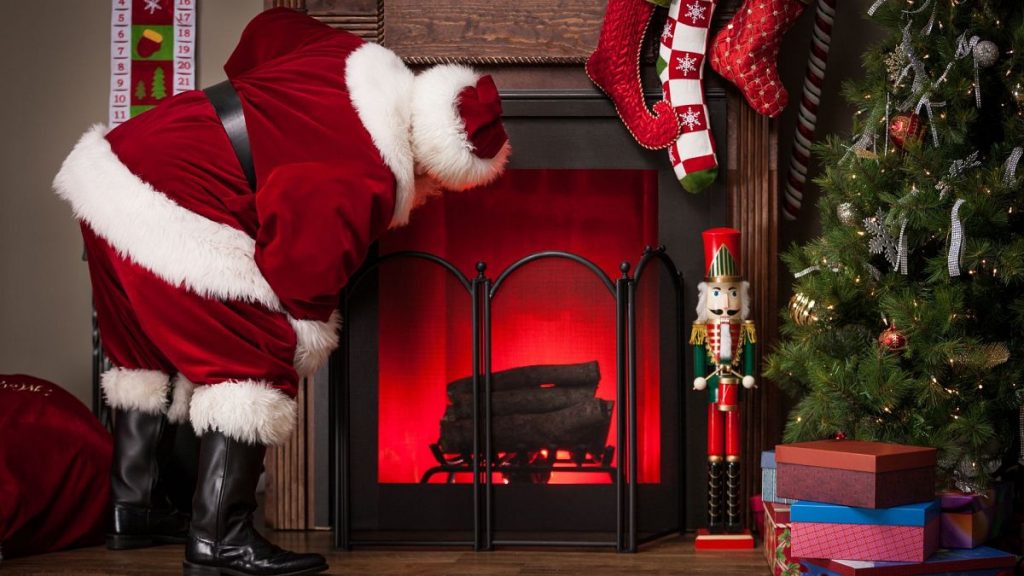Europe’s tapestry of Christmas gift-givers reflects the continent’s rich cultural diversity, moving beyond the ubiquitous image of Santa Claus to encompass a fascinating array of figures, each with their own unique traditions and origins. While Santa Claus, with his iconic red suit, booming laughter, and airborne reindeer, remains a prominent figure across much of Western Europe, his presence often intertwines with regional interpretations and distinct gift-bringing counterparts. This festive amalgamation results in a vibrant blend of shared and unique Christmas customs.
Father Christmas, known by various names such as Père Noël in France and Babbo Natale in Italy, exemplifies this cultural adaptation. While these figures may have once possessed distinct characteristics, they have gradually converged with the global image of Santa Claus, sharing his attire, North Pole workshop, and elven helpers. This assimilation highlights the powerful influence of modern Christmas iconography, while still allowing for subtle regional nuances. In other parts of Western and Northern Europe, including Germany, Belgium, the Netherlands, and Denmark, the mantle of gift-giver often falls upon the aptly named Christmas Man, further demonstrating the regional variations on the Santa Claus archetype.
The historical roots of many of these gift-givers can be traced back to Saint Nicholas, a 4th-century Christian bishop renowned for his generosity and compassion. Venerated as the patron saint of children, sailors, and merchants, Saint Nicholas’s legacy of gift-giving evolved into the Dutch tradition of Sinterklaas, which eventually crossed the Atlantic and transformed into the American Santa Claus. Over time, this benevolent figure merged with European folktales of magical beings rewarding well-behaved children, solidifying his role as the central figure in Christmas gift-giving.
Beyond the Santa Claus family of gift-givers, other traditions offer unique perspectives on the spirit of Christmas. In Central European countries like Germany, Austria, Switzerland, the Czech Republic, and Slovakia, the Christkind, or Christ Child, takes center stage. This figure, sometimes depicted as the infant Jesus and sometimes as a winged angelic being, embodies the essence of Christmas by representing the very figure for whom the holiday is named. The Christkind tradition emphasizes the religious significance of Christmas, offering a distinct alternative to the more secularized image of Santa Claus. In some regions, the Christkind and Saint Nicholas even collaborate in gift distribution, adding another layer of complexity to the festive tapestry.
The Nativity narrative also plays a significant role in gift-giving traditions. In Spain, the Three Kings, or Three Wise Men, assume the role of present-bearers, their gifts of gold, frankincense, and myrrh symbolizing the kingship, divinity, and sacrifice of the newborn Jesus. This tradition culminates on January 5th, with elaborate parades and the distribution of sweets to children, extending the festive season beyond the December 25th celebrations. This unique custom underscores the enduring influence of biblical narratives on Christmas traditions.
Venturing further east, the wintry figure of Old Man Frost, Ded Moroz (Grandfather Frost) in Russia and Deda Mraz in Serbia, emerges as the primary gift-giver. Clad in a long fur coat, typically red or blue, and sporting a flowing white beard and a magical staff, Old Man Frost delivers presents to well-behaved children on New Year’s Eve. This tradition reflects the cultural blending of Christmas and New Year celebrations in these regions, with Old Man Frost serving as a symbol of winter’s bounty and the promise of a new year. In Ukraine, both Old Man Frost and Saint Nicholas are recognized, highlighting the coexistence of diverse cultural influences.
The diversity of Christmas gift-givers extends even further, with regional variations and unique traditions adding to the rich tapestry of European festive customs. Saint Basil, another early Christian bishop known for his charitable works, brings presents to children in Greece and Cyprus on January 1st, his feast day. The traditional vasilopita, a cake or sweet bread containing a hidden coin, symbolizes Saint Basil’s generosity and the spirit of sharing. In Catalonia and Andorra, the quirky tradition of the Caga Tió, or Christmas Log, involves beating a decorated log until it “defecates” gifts and sweets, providing a whimsical and unique take on gift-giving. The Nordic countries also boast their unique gift-bringers, including Iceland’s Yule Lads, mischievous figures who deliver presents throughout the 13 days leading up to Christmas, the Christmas Gnome in Norway and Sweden, a benevolent guardian of the home and farm, and Finland’s Joulupukki, a Yule Goat figure who eventually evolved into a Santa Claus-like character.
This panoply of gift-giving traditions across Europe reflects the continent’s rich history, diverse cultural influences, and the enduring human desire to celebrate the spirit of generosity and joy during the festive season. Whether it’s Santa Claus, Father Christmas, Saint Nicholas, the Christkind, the Three Kings, Old Man Frost, Saint Basil, the Caga Tió, or any of the other myriad gift-givers, the underlying message remains the same: the celebration of giving, kindness, and the magic of Christmas. Each figure, with its unique origins and customs, adds a vibrant thread to the tapestry of European Christmas celebrations, creating a festive mosaic that reflects the continent’s rich cultural heritage.

